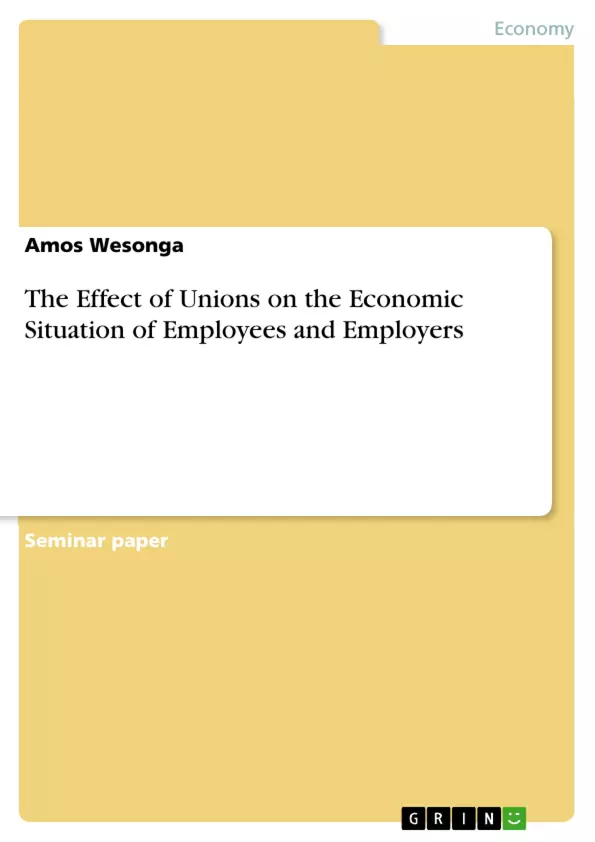This text deals with the effects of unions on the economic situation of employees and employers.
A union is an entity that ensures employees are subjected to conducive work environments through responding to complaints related to rates of payment, labor disputes, work safety, and hours of employment. The goal of ensuring the terms and conditions of the workforce are enhanced and maintained is attained through having a collective bargain, which refers to a process through which unions negotiate with employers the terms of employment on behalf of their members
Inhaltsverzeichnis (Table of Contents)
- Introduction
- Effects of unions on Economic situation of workers
- Wage premiums
- Non-wage compensation and benefits
- Union Threat Effect
Zielsetzung und Themenschwerpunkte (Objectives and Key Themes)
This document explores the impact of unions on the economic situation of both employees and employers. It examines how unions affect workers' wages, benefits, and overall compensation, and also investigates the "union threat effect," which refers to the pressure non-unionized companies feel to offer comparable benefits to avoid unionization.
- The influence of unions on employee wages
- The impact of unions on non-wage compensation and benefits
- The concept of the "union threat effect" and its impact on non-unionized employers
- The role of unions in establishing wage standards and influencing overall wage dynamics
- The relationship between union density and the effectiveness of collective bargaining
Zusammenfassung der Kapitel (Chapter Summaries)
- Introduction: This section defines what a union is and outlines its primary role in advocating for employee rights through collective bargaining. It highlights the constitutional right of employees to join a union and the legal protections afforded to them in the United States.
- Effects of unions on Economic situation of workers: This chapter delves into the positive economic impact unions have on their members. It discusses the phenomenon of "union wage premiums," which are the higher wages typically earned by unionized workers compared to non-unionized employees. The chapter also analyzes the additional benefits, such as health insurance and pension plans, that unionized workers often receive.
- Union Threat Effect: This section explores the concept of the "union threat effect," where non-unionized employers improve their compensation and employment practices to deter unionization. It explains how this pressure can lead to generalized improvements in wages and working conditions across an entire industry, even for non-unionized workers.
Schlüsselwörter (Keywords)
This text focuses on key concepts such as labor unions, collective bargaining, wage premiums, non-wage compensation, union density, union threat effect, and the overall impact of unions on the economic situation of workers and employers.
- Quote paper
- Dr. Amos Wesonga (Author), 2019, The Effect of Unions on the Economic Situation of Employees and Employers, Munich, GRIN Verlag, https://www.grin.com/document/999888



